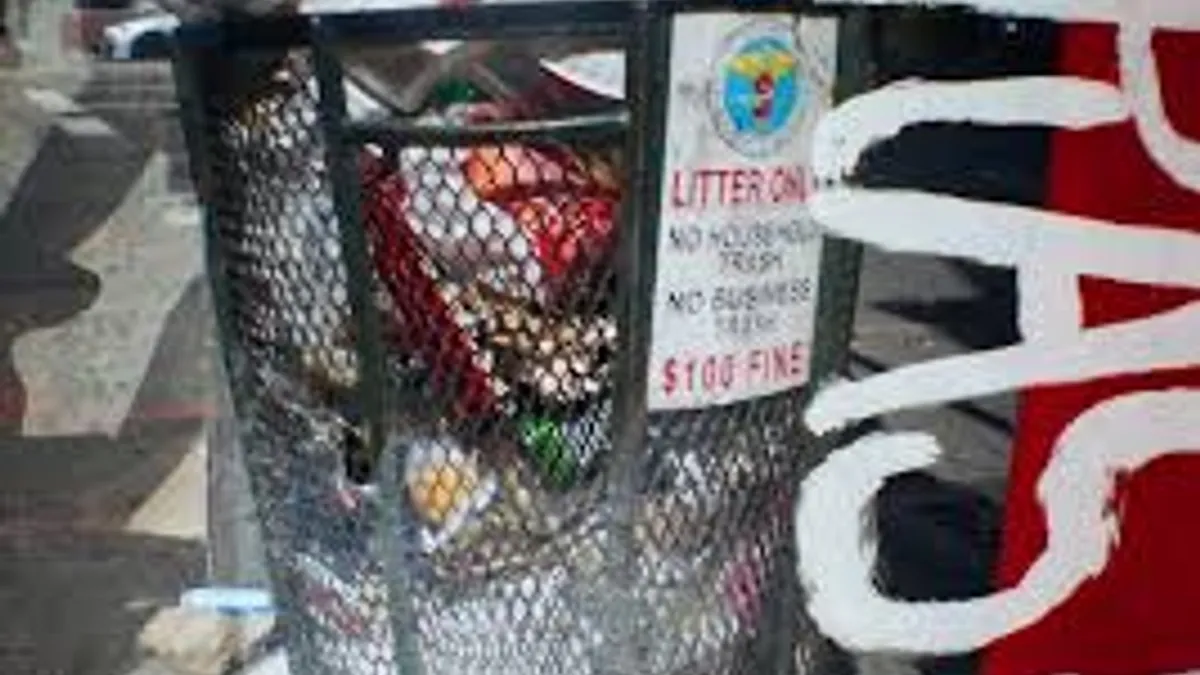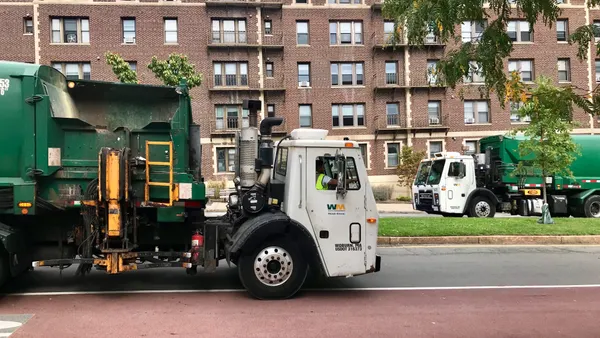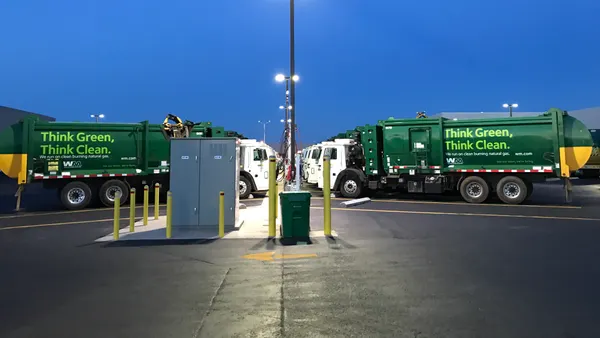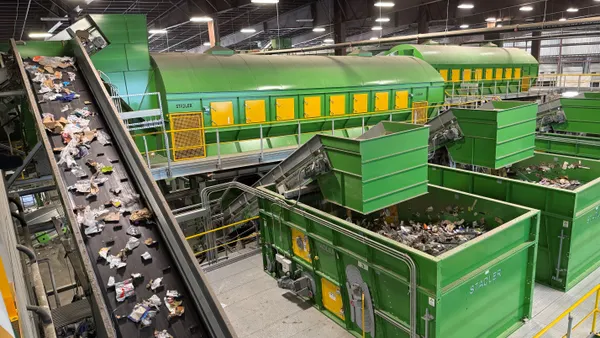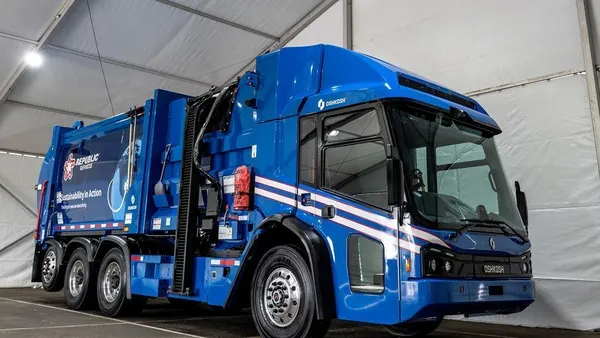Editor's Note: This piece was written by Michael Heimbinder, founder and executive director of HabitatMap, in response to a recent opinion post from Laborers' Local 108 Mike Hellstrom. The opinions represented in this piece are independent of Waste Dive's views.
As something that touches the life of every New Yorker, the commercial waste industry in New York City is badly in need of reform. Six nights a week, thousands of privately operated waste collection vehicles depart garages located in outer borough neighborhoods to criss-cross the city, following grossly inefficient routes that generate needless air pollution, noise and safety hazards for communities and workers alike. Whereas the New York City Department of Sanitation (DSNY) can collect a ton of garbage in approximately four miles, the typical private carter, owing to the fact that their business customers are spread over multiple community districts and boroughs, needs to drive three times as far to collect the same load.
Fortunately, relief is in sight. After nearly a year of careful study and analysis, New York City recently committed to implementing a "zoned" collection system for the commercial waste sector, as has been done to great success in areas across the nation. By dividing the city into zones and having commercial carting companies bid to service each zone, the city's study found that the number of miles traveled by private collection vehicles will be cut by an astounding 49-68%. This is a win for both the private carting companies, which will be able to achieve dramatic efficiencies in operation, and everyday New Yorkers, who will have to contend with less noise and air pollution.
Because only 10% of the city's privately operated collection vehicles meet the EPA's 2007 emissions standards, they emit substantially more fine particulate matter, or PM2.5, than DSNY’s truck fleet, which meets both the EPA standard and those proscribed by Local Law 38. According to the NYC Department of Health and Mental Hygiene, New Yorkers' exposure to PM2.5 is responsible for more than 3,000 deaths, 2,000 hospital admissions and 6,000 emergency room visits annually. With the city's private carter study estimating PM2.5 reductions under a zoned commercial collection system of 34-56%, there isn't a child or older adult (those populations most vulnerable to the impacts of air pollution) that doesn't stand to benefit from reforming the commercial waste sector.
Sadly, a few voices in the industry — such as business manager of Laborers’ Local 108 Mike Hellstrom — are either misreading, or deliberately distorting, the methodology and meaning of the city’s new private carting study in an effort to maintain the dirty and dangerous system that has dozens of separate carting companies serving midtown Manhattan alone.
Counter to common sense, Hellstrom claims that air pollution emissions from collection vehicles are nearly the same whether they drive slow or fast. This is flat out wrong. Countless government and academic studies have proven that slower vehicle speeds result in fewer emissions (not to mention fewer crashes and the resulting pedestrian injuries and fatalities). But Hellstrom is missing the point. Emissions reductions under a zoned system are not primarily the result of slower moving trucks; they are the result of trucks driving fewer miles because they can fill their hopper to capacity more efficiently when customers are clustered rather than spread all over the city. The city’s study clearly demonstrates that the shorter routes achieved by collection zones will reduce the vehicle miles traveled by commercial carters by millions of miles and allow drivers to complete their routes in less time — reducing driver fatigue, improving safety and helping get private collection vehicles off the road before morning rush hour.
Good policy should be guided by principles of sustainability, equity and fairness and guided by good data analysis. In New York City, local government is reforming a problematic system by making the right decisions with the right information.


